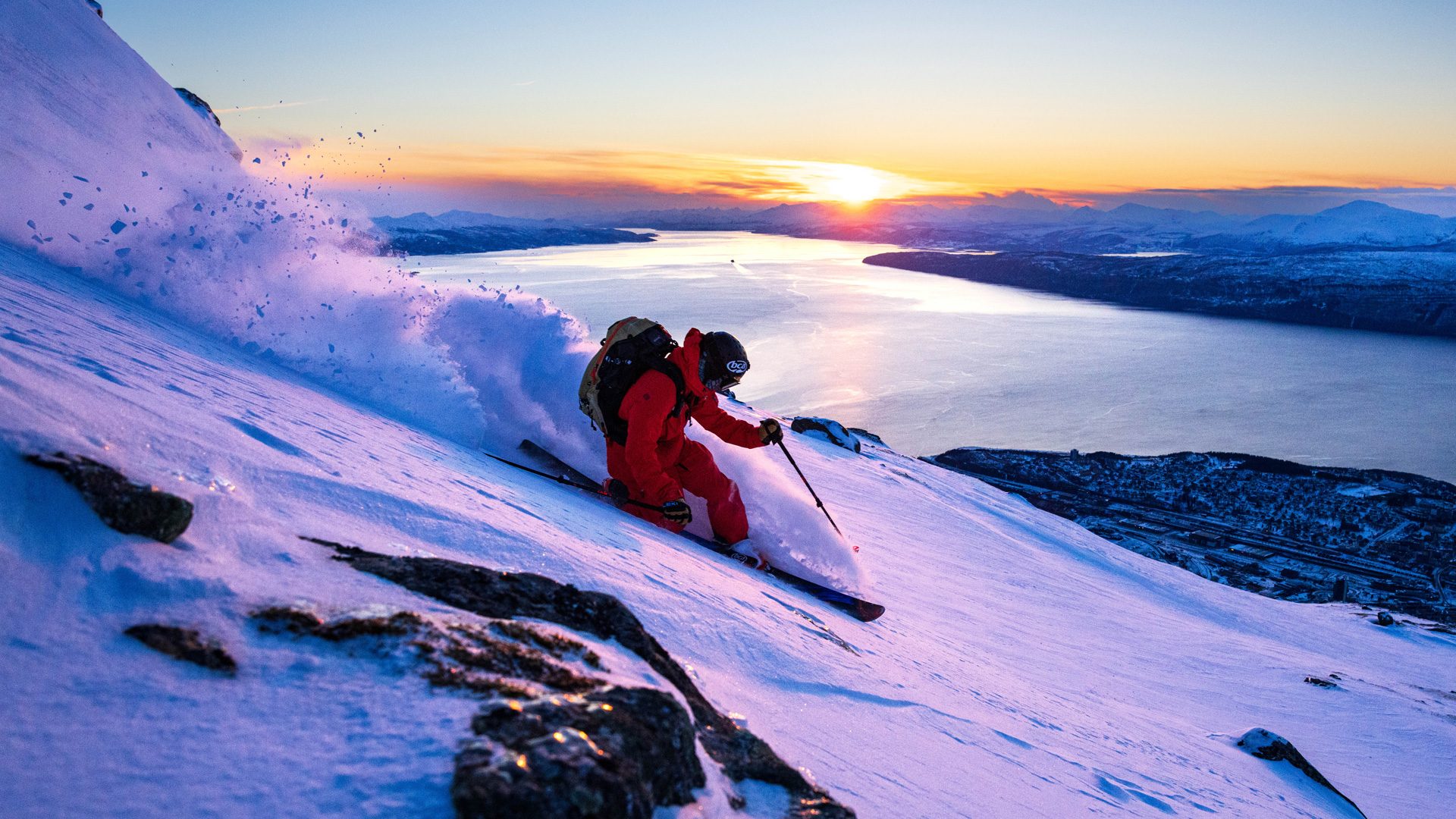Have you ever wondered what it would be like to climb snow capped mountains that rise right out of ocean fjords? Have you thought what the snow would look like under a blazing arctic sunset? These are situations that I and probably most adventure photographers dream about. And sometimes dreams come true!
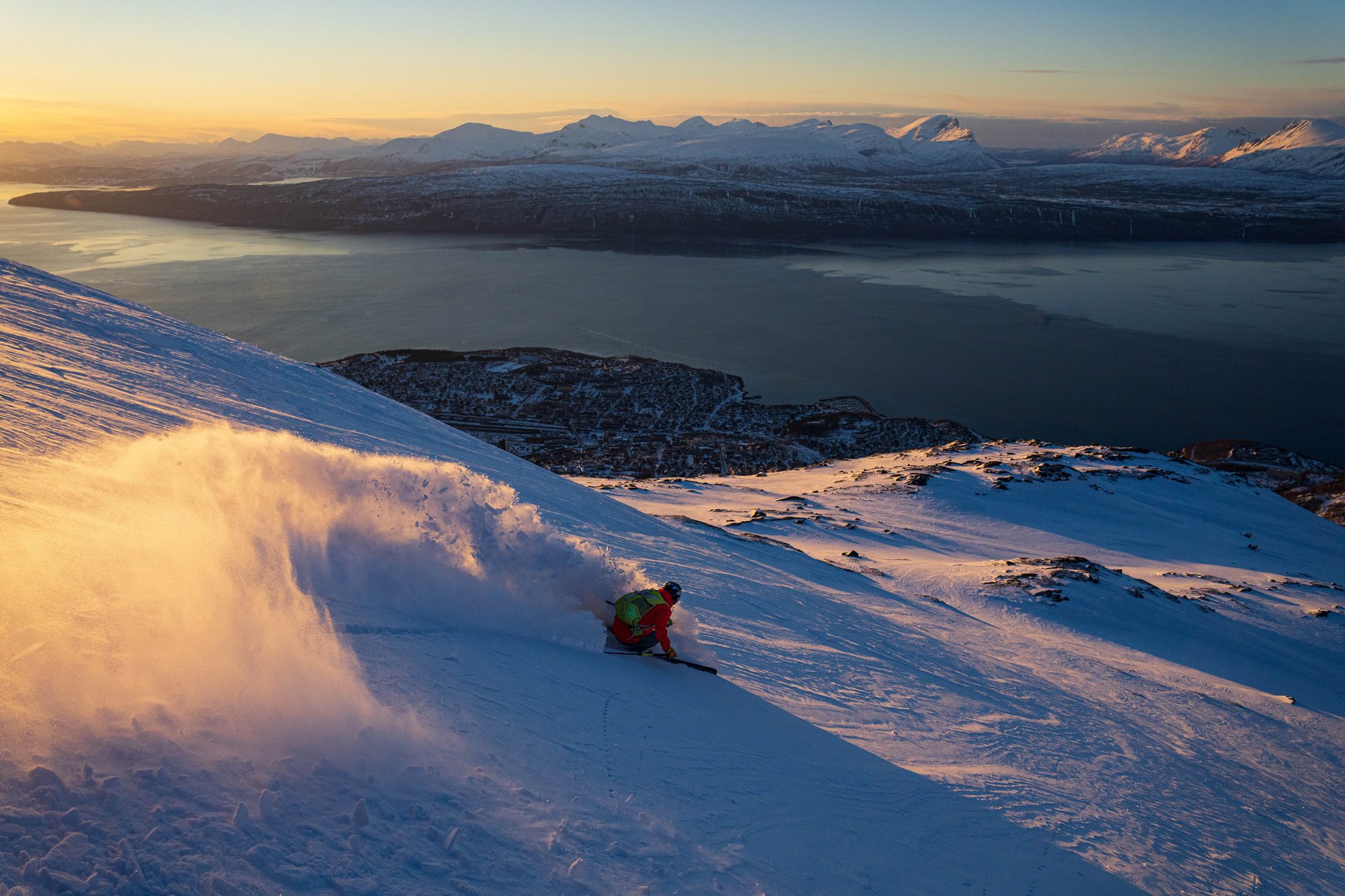
In early April 2022, I embarked on an adventure photoshoot in northern Norway. My group and I were north of the Arctic Circle on assignment shooting backcountry skiing. Our shoot location was the unequaled Lofoten islands that begin near Narvik and extend southwest through the stunningly beautiful mountains, islands and fjords that make up the archipelago.
We saw all sorts of dynamic atmospherics during our time there including heavy snow, breaking storms, low hanging clouds, and sharp arctic light. Capturing these fleeting moments was challenging as weather moved in and out faster than any other place I have ever photographed.
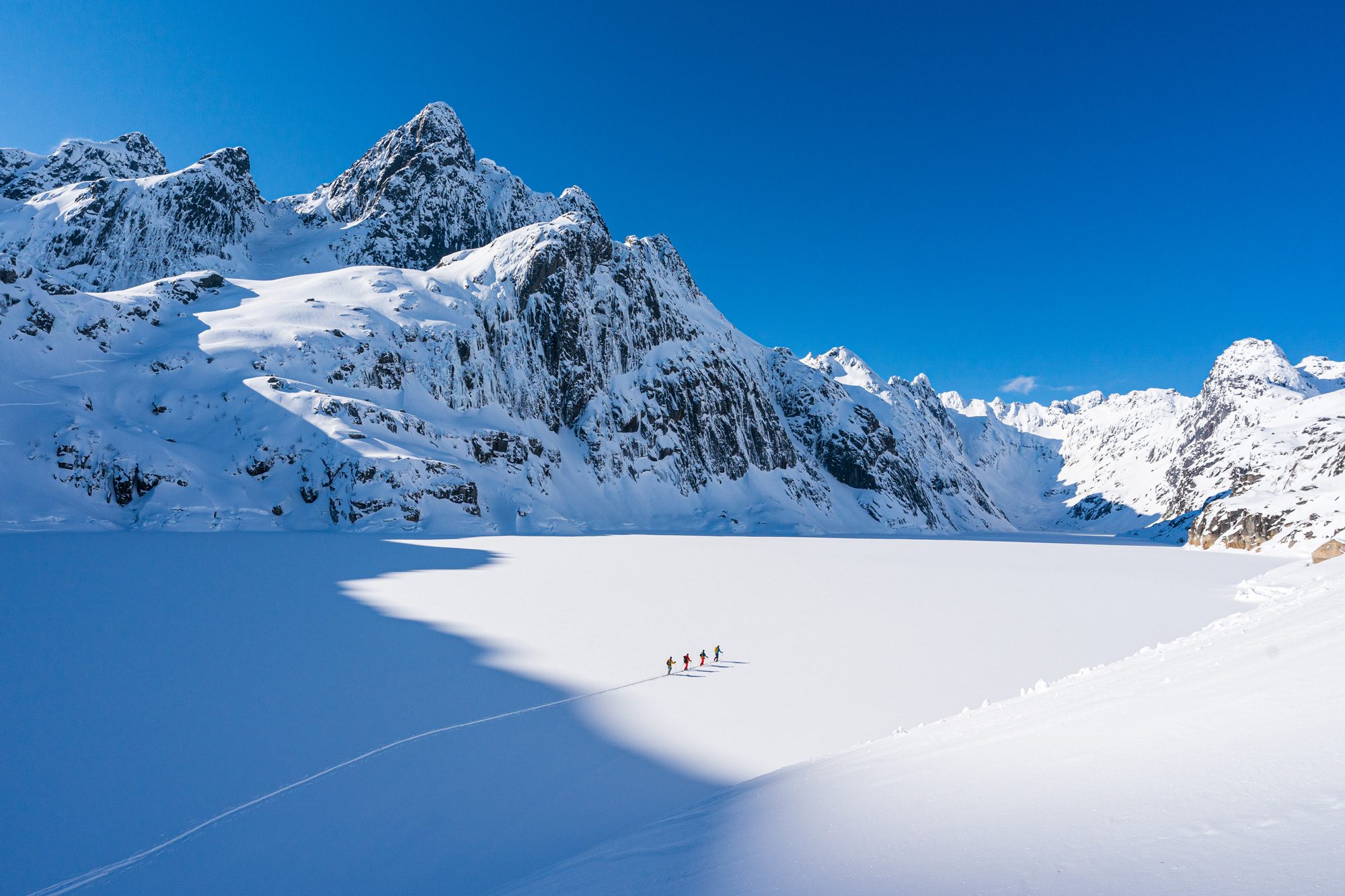
Gearing up for an Arctic Adventure
To capture the action and tell the story of our trip I relied upon my SIMGA lens trio consisting of the 14-24mm F2.8 DG DN | Art, 24-70mm F2.8 DG DN | Art and 100-400mm DG DN OS | Contemporary lenses. These are high-end, professional-grade lenses that I have shot on numerous assignments and I have come to trust. The autofocus is fast and accurate, and the image quality is incredible. Additionally, the build quality is also first rate. That was really important on a trip like this as we shot in some pretty tough conditions, and if something went wrong there was zero chance of getting a replacement lens.
I should also note that these are all DG DN (full-frame, for mirrorless) lenses that fit right on my cameras without the need for any adapters. My cameras of choice for this trip were the Sony a9 II and the 50-megapixel a1. The SIGMA lenses performed flawlessly on the Sony bodies and helped me get the best images possible.

Lofoten is full of bucolic beauty and impossibly charming seaside villages and the landscape photographer in me could not pass those by without tripping the shutter. For these moments I had with me a set of SIGMA I series lenses in another small bag. The 20mm F2, 35mm F2 and 65mm F2 DG DN | Contemporary lenses took up a small corner of my pack and weighed less than two and a half pounds! I wrote another article that dives more into this setup so be sure to check it out here.
How I Got the Shots!
There are two main ways that I shoot outdoor action sports. First is what I call the “lockoff” shot. In this scenario, I use single shot AF (AF-S) and pre-focus to a spot on the slope and communicate with the athlete exactly where they need to be. This is a great technique to use with wider lenses when the background is a key element to the shot. The second scenario is what I call a following shot. I use the camera’s continuous AF mode (AF-C) which tracks the athlete as they move down the mountain. I typically use this method with telephoto lenses and situations where the action and athlete are more important than the setting the sport takes place in. Guess which technique I used more on this trip?
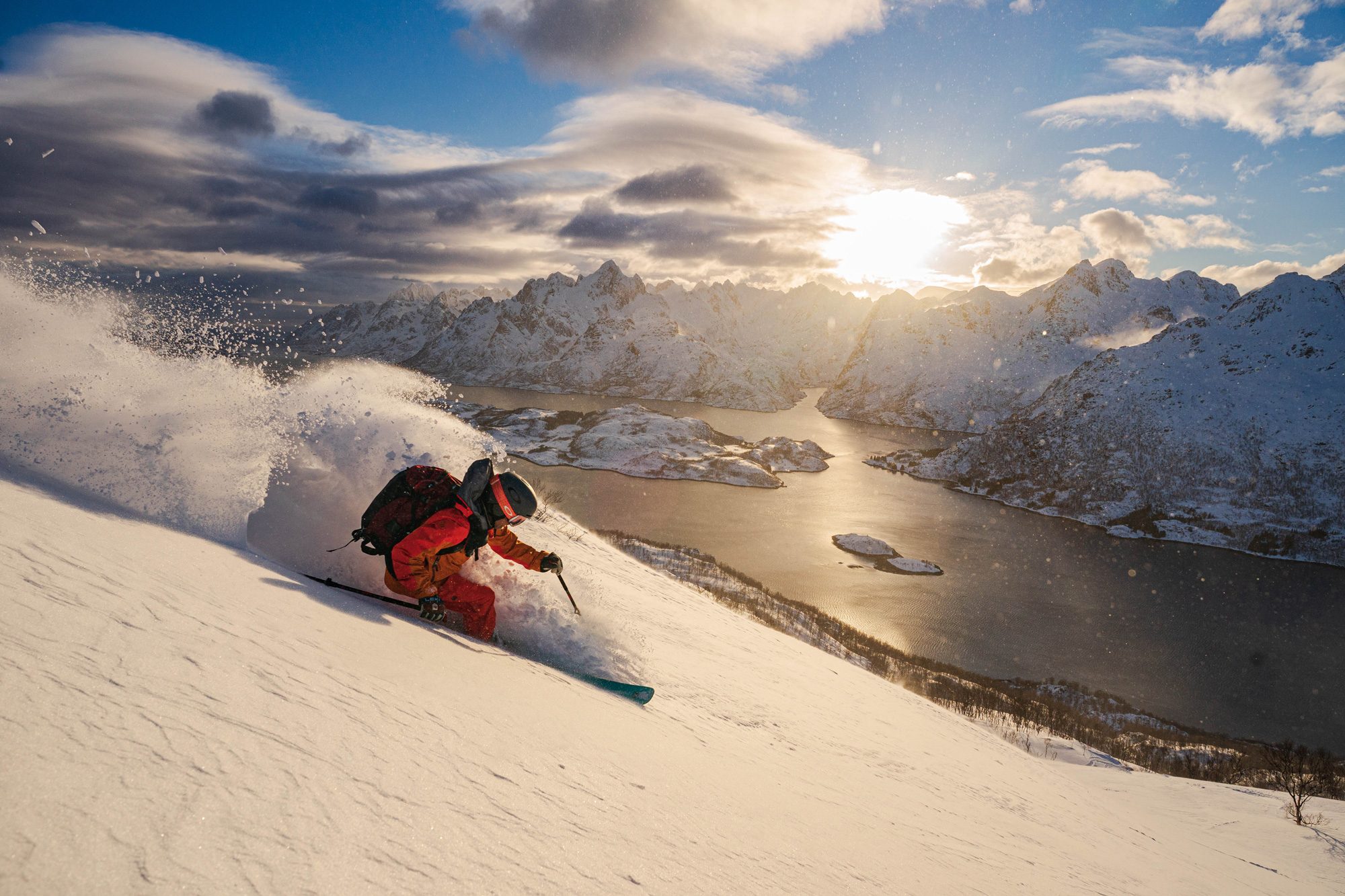
A typical day looked something like this: I’d wake around 6:30 AM and put my pack together. Once my camera gear was loaded, I would pile in an ice axe, crampons, ski crampons, climbing skins, shovel, probe, extra layers, two sandwiches, chocolate bar and water. At 7:30 AM we would attend a guide meeting and get an update on snow conditions and stability. Breakfast at 8, and out the door around 9. After a short drive, we would arrive at our trailhead and up the mountain we go, photographing all the way. When our day in the field was done, we had to race back to the lodge to arrive before 9 PM to get dinner. On multiple nights we arrived at 9:01. Luckily the staff at Lofoten Ski Lodge kept dinner out for us!
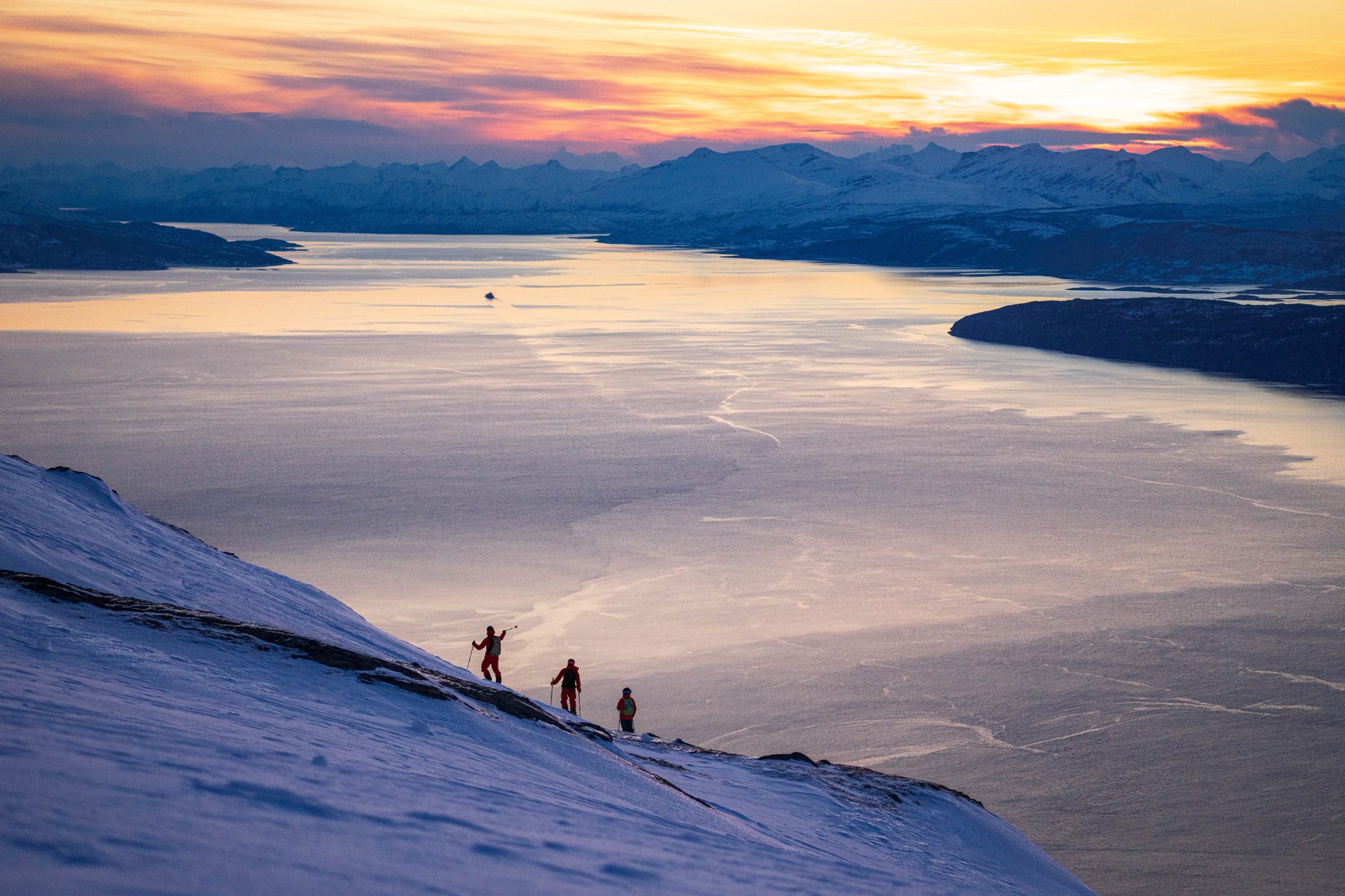
Every evening after dinner I would pull out all my camera gear, put it in a safe place and let it dry. Then I would download and backup all my images from the day. Everyone has a slightly different workflow, but my process is to pull the card and copy all images to my laptop via the Adobe Lightroom import function. Once everything is keyworded and imported, I copy all the files to an external drive. Lastly, I never format a card while on assignment. This give me three points of backup protection. This also means that I need to bring enough card space to get me through two weeks of shooting. How much is that? Eight 64GB cards and two 32GB cards for a grand total of 576GB of memory card storage. Yes, it was enough.

One of the amazing things about Norway is that for the most part, there is no such thing as trespassing. You are able to access any mountain, river or ocean beach without every having to worry about being met with a rancher’s gun as you might stateside. So we drive though picturesque fjords with snow capped peaks towering straight out of the ocean, and spy lines we wish to ski. We find a pullout and up we go, through fog and snow. Will the light break through? We never know, but regardless the photography is fun, challenging and productive.

To answer the question I posed earlier, I used the “lockoff” technique far more often on the trip. Why? Well capturing the ocean in my ski images was super important and having a level horizon is critical. There is nothing more amateurish than an ocean, lake or any horizon that is visibly leaning. By pre-composing the frame and having my athlete come through the scene, I was guaranteed straight horizons.
Farewell, Fjords
Like all good things, my trip to Norway (and this article) came to an end. I have to give special thanks to Micke Ekenstam and the tourism board for their help in Narvik. And a huge shoutout to Seth Hobby and his team at the Lofoten Ski Lodge, as well as Northern Alpine Guides for their help in Lofoten.
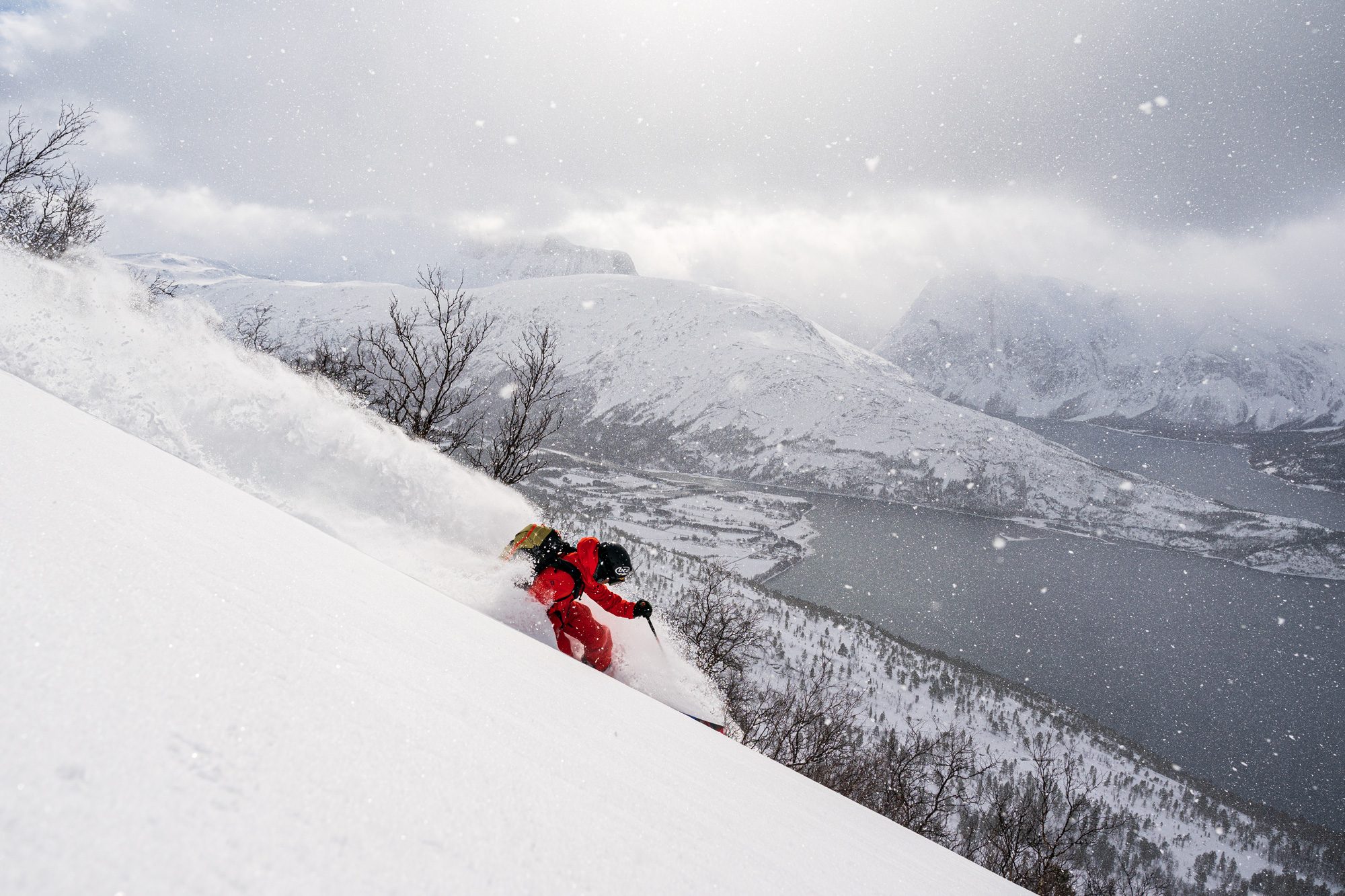
If you are yearning for adventure and feel good about traveling, don’t hesitate. Grab one of SIGMA’s fantastic lens offerings, buy a plane ticket and head out to the dream location of your choice. Who knows, maybe I’ll see you out there! Happy shooting!

